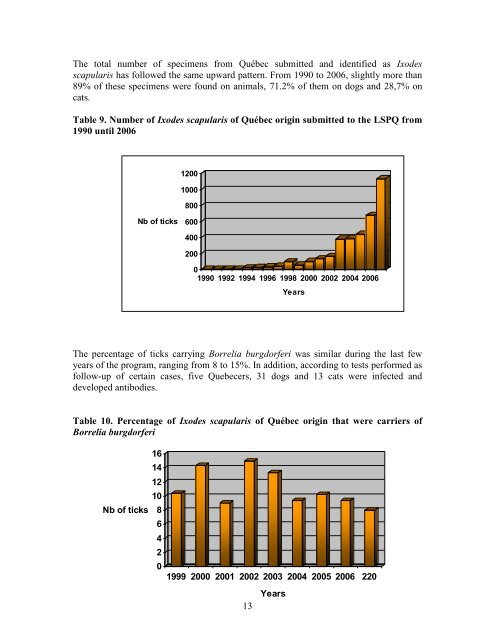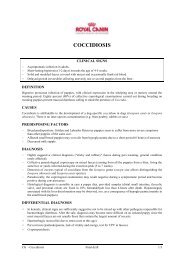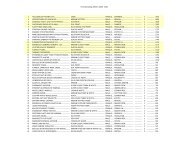Guide to Preventing Parasites.pdf - Royal Canin Canada
Guide to Preventing Parasites.pdf - Royal Canin Canada
Guide to Preventing Parasites.pdf - Royal Canin Canada
You also want an ePaper? Increase the reach of your titles
YUMPU automatically turns print PDFs into web optimized ePapers that Google loves.
The <strong>to</strong>tal number of specimens from Québec submitted and identified as Ixodes<br />
scapularis has followed the same upward pattern. From 1990 <strong>to</strong> 2006, slightly more than<br />
89% of these specimens were found on animals, 71.2% of them on dogs and 28,7% on<br />
cats.<br />
Table 9. Number of Ixodes scapularis of Québec origin submitted <strong>to</strong> the LSPQ from<br />
1990 until 2006<br />
Nb of ticks<br />
1200<br />
1000<br />
800<br />
600<br />
400<br />
200<br />
0<br />
1990 1992 1994 1996 1998 2000 2002 2004 2006<br />
The percentage of ticks carrying Borrelia burgdorferi was similar during the last few<br />
years of the program, ranging from 8 <strong>to</strong> 15%. In addition, according <strong>to</strong> tests performed as<br />
follow-up of certain cases, five Quebecers, 31 dogs and 13 cats were infected and<br />
developed antibodies.<br />
Table 10. Percentage of Ixodes scapularis of Québec origin that were carriers of<br />
Borrelia burgdorferi<br />
Nb of ticks<br />
16<br />
14<br />
12<br />
10<br />
8<br />
6<br />
4<br />
2<br />
0<br />
13<br />
Years<br />
1999 2000 2001 2002 2003 2004 2005 2006 220<br />
Years







